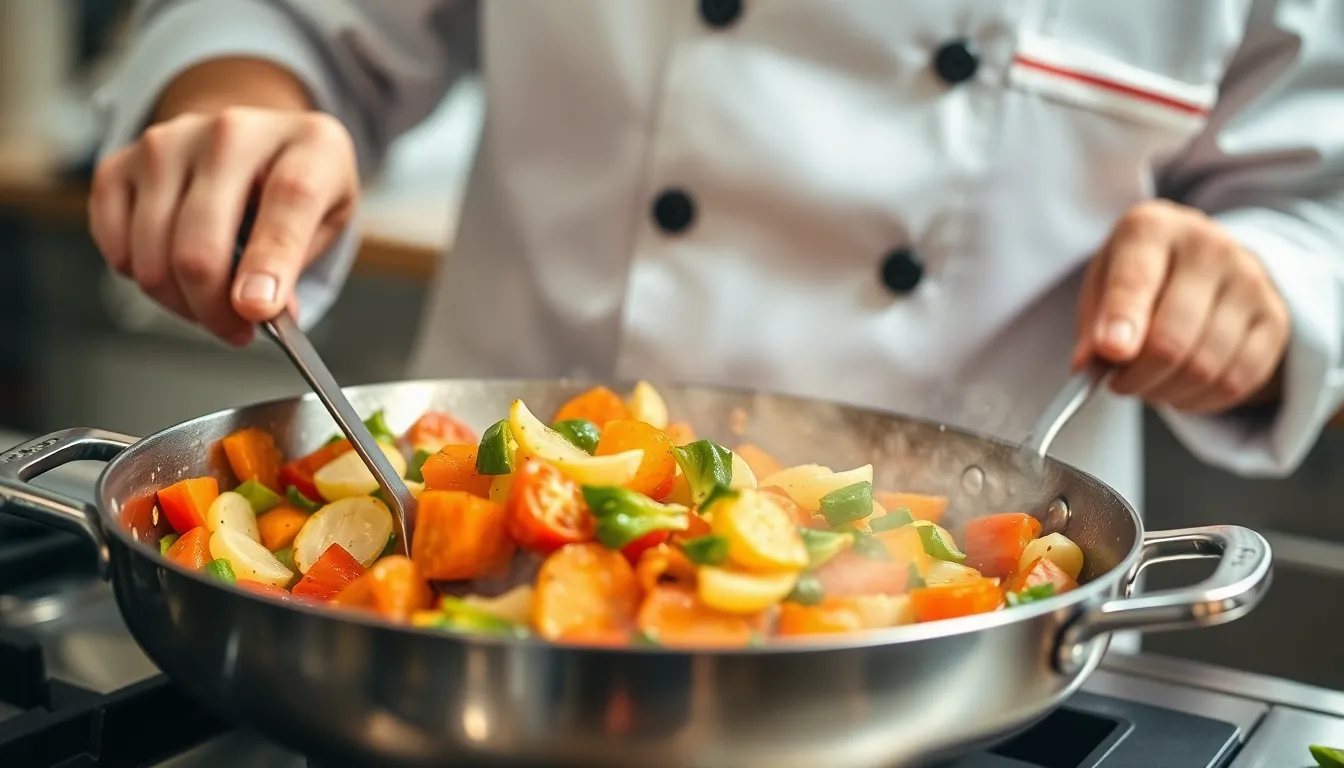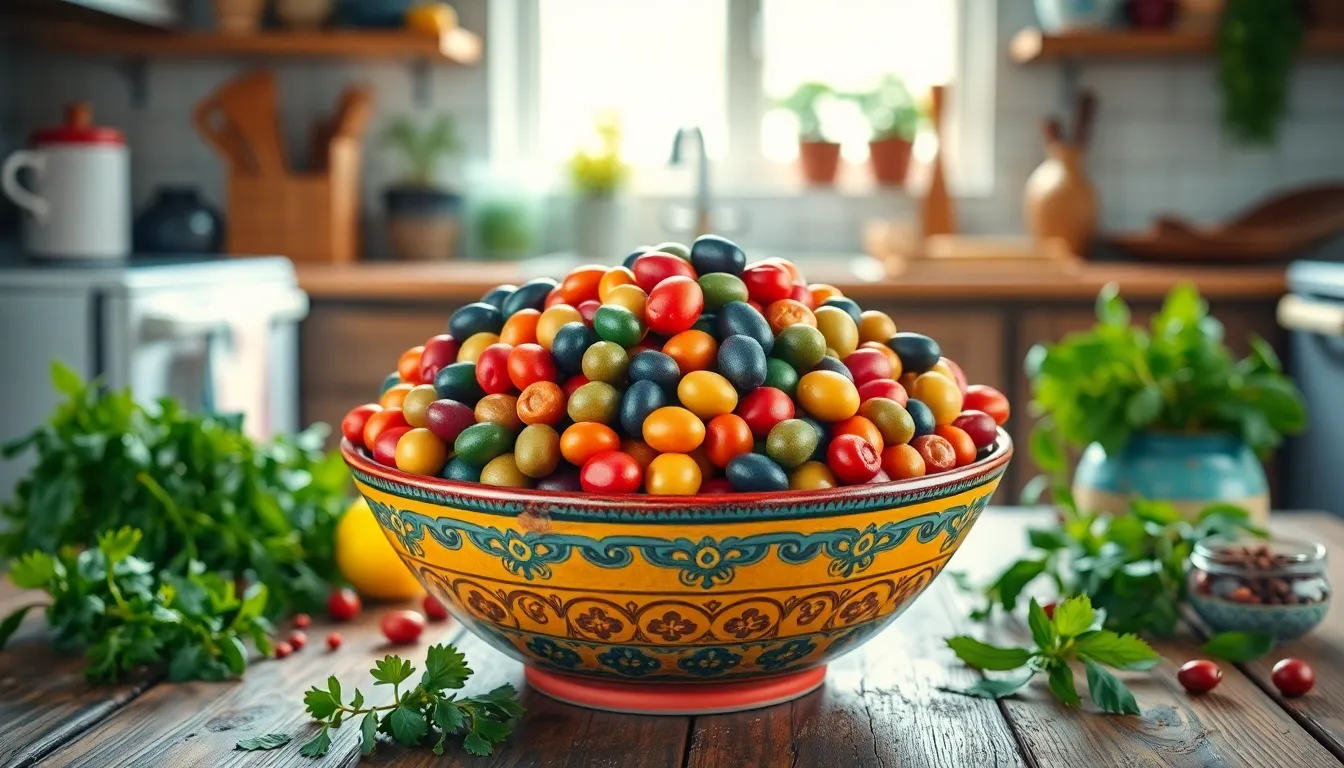Italian cooking isn’t just about tossing pasta into boiling water and hoping for the best. It’s an art form, a science, and a love letter to the palate all rolled into one. From the delicate dance of sautéing garlic to the bold embrace of a wood-fired pizza, mastering these techniques can elevate any home cook from “meh” to “magnifico!”
Table of Contents
ToggleOverview of Italian Cooking Techniques
Italian cooking techniques encompass a variety of methods that elevate meals. Mastering these methods enhances skills and understanding of flavors.
Sautéing represents a fundamental technique. Using olive oil, garlic, and vegetables, cooks infuse dishes with rich, aromatic flavors. Proper heating ensures ingredients caramelize without burning.
Braising serves as another vital technique, allowing tougher cuts of meat to become tender. This technique involves cooking meat slowly in liquid, a method common in dishes like osso buco. The transformation of ingredients into flavorful, melt-in-your-mouth morsels holds significant appeal.
Grilling remains essential in Italian cuisine. Charred vegetables and marinated meats emerge with smoky flavors. Cooking on a wood-fired grill, known as a brace, adds depth to the overall taste profile.
To create pasta, techniques like making dough and rolling it out require practice. Fresh pasta brings a delicate texture, allowing sauces to cling effectively. Dishes like tagliatelle and ravioli exemplify the artisan approach of Italian cooking.
Roasting showcases the natural sweetness of vegetables. Caramelization during roasting enhances flavor complexity. Incorporating herbs further elevates the dish.
Frying, particularly in olive oil, brings crispy textures to Italian dishes. Examples include arancini and calamari, which offer delightful crunch and rich flavors.
Understanding these techniques cultivates appreciation for Italian culinary traditions. Engaging with each method unlocks a deeper connection to the ingredients and the final dishes.
Essential Cooking Methods

Italian cooking relies on several essential techniques that elevate flavor and texture. Mastering these methods allows cooks to create authentic Italian dishes.
Sautéing
Sautéing involves cooking food quickly over high heat. Olive oil, garlic, and vegetables play crucial roles in this technique. The sizzling sound indicates perfect heat and releases aromatic flavors. Chefs often sauté onions or garlic before adding other ingredients, enhancing overall taste. Fresh herbs and spices can also be introduced during this process for added depth.
Braising
Braising combines both wet and dry cooking methods. By searing meat first, a rich crust forms before slow cooking it in liquid. This technique tenderizes tougher cuts of meat, allowing flavors to meld over time. Braised dishes often include wine, broth, or aromatic vegetables, resulting in hearty stews. Popular examples include osso buco and braised short ribs, which showcase the technique’s versatility.
Roasting
Roasting harnesses dry heat to bring out natural sweetness in ingredients. The caramelization process creates a beautiful golden exterior while preserving the interior’s moisture. Seasonal vegetables like carrots and potatoes thrive in this method. Roasted meats develop a flavorful crust, providing a satisfying texture. Proper seasoning prior to roasting enhances the dish’s overall flavor profile.
Traditional Italian Ingredients
Italian cuisine relies heavily on fresh, high-quality ingredients that make each dish a delight. The flavors and aromas of traditional Italian cooking come alive through the use of simple yet vibrant components.
Fresh Herbs
Fresh herbs play a vital role in enhancing the taste of Italian dishes. Basil, parsley, and oregano stand out as the most commonly used options. They contribute fragrant notes and vibrant colors to sauces and dishes. When chopped or torn, these herbs release essential oils, intensifying their flavor. Incorporating fresh herbs at the end of cooking preserves their brightness, adding a fresh finish to pasta and vegetable dishes. Besides enhancing flavor, they offer nutritional benefits, making meals healthier.
Olive Oil
Olive oil acts as the cornerstone of Italian cooking, providing rich flavor and health benefits. Extra virgin olive oil, known for its superior quality, contains antioxidants and healthy fats. Used for sautéing, dressing salads, or drizzling over finished dishes, it enriches food with complexity and depth. Authentic Italian recipes typically call for olive oil rather than butter, promoting lighter and fresher flavor profiles. Its versatility makes olive oil indispensable, as it enhances marinades and sauces while complementing the natural tastes of ingredients like vegetables and meats.
Regional Variations
Italian cooking varies greatly by region, showcasing diverse ingredients and techniques that define local traditions. Understanding these differences reveals the rich culinary tapestry of Italy.
Northern Italy
Northern Italy features hearty flavors with an emphasis on creamy sauces and rich meats. Risottos and polentas dominate the dining tables, often complemented by local game meats like venison. Using butter instead of olive oil emphasizes the region’s unique approach to cooking. Moreover, ingredients such as truffles and cheeses from the Alps enhance many dishes. Dishes like osso buco shine with the region’s influence, showcasing cooking methods that meld flavors expertly. Affordable meals often include rich vegetable-based dishes that reflect the local agricultural practices.
Southern Italy
Southern Italy offers a bright, fresh culinary experience characterized by tomatoes and seafood. Olive oil shines in every dish, often taking center stage in sauces and marinades. Typical meals highlight vibrant flavors, such as the famous pizza Napoletana. Furthermore, pasta varieties like orecchiette and vermicelli, often paired with seasonal vegetables, showcase regional preferences. Cooking techniques emphasize simplicity, with many recipes relying on minimal, high-quality ingredients. Herbs like basil and oregano, frequently used at the end of cooking, elevate flavors and enhance the overall experience.
Italian cooking techniques are a gateway to experiencing the rich tapestry of Italy’s culinary heritage. Mastering these methods not only enhances flavor but also deepens the connection to the ingredients and traditions that define this beloved cuisine. From the art of sautéing to the craft of pasta-making each technique offers a unique way to celebrate the fresh and vibrant ingredients that characterize Italian dishes.
Embracing these techniques allows home cooks to transform everyday meals into extraordinary culinary experiences. With each dish prepared, one can appreciate the passion and history behind Italian cooking, making every bite a journey through Italy’s diverse regions and flavors.




